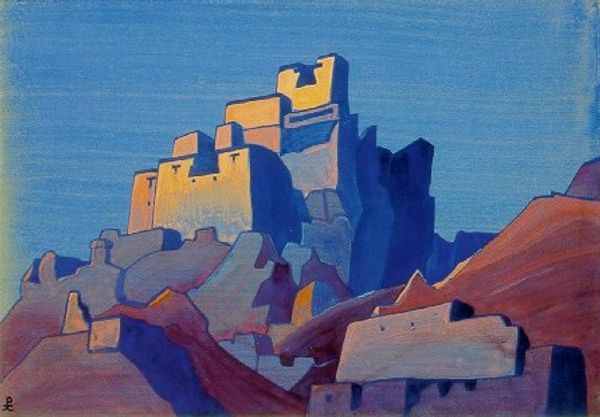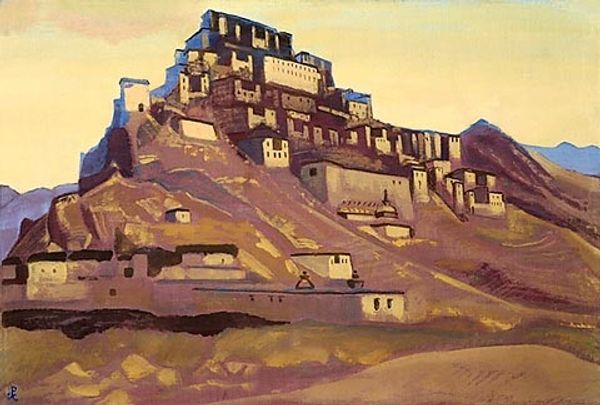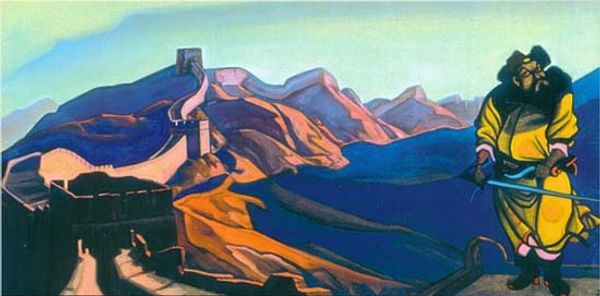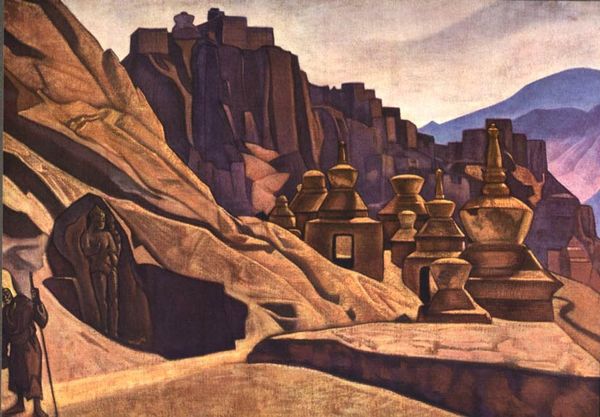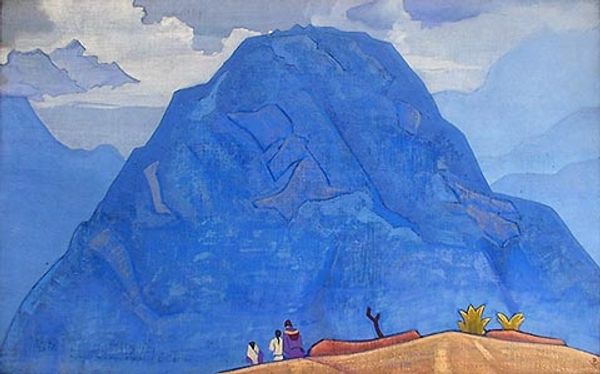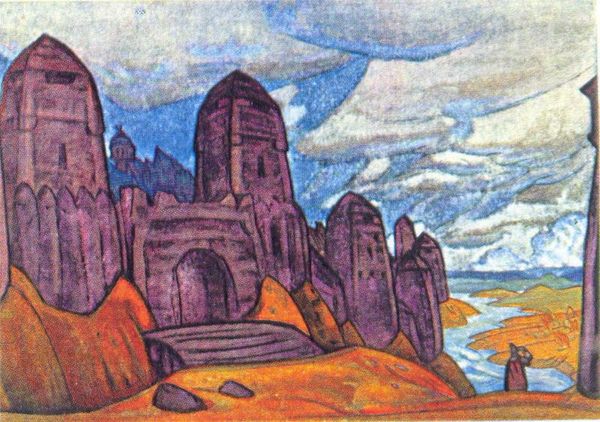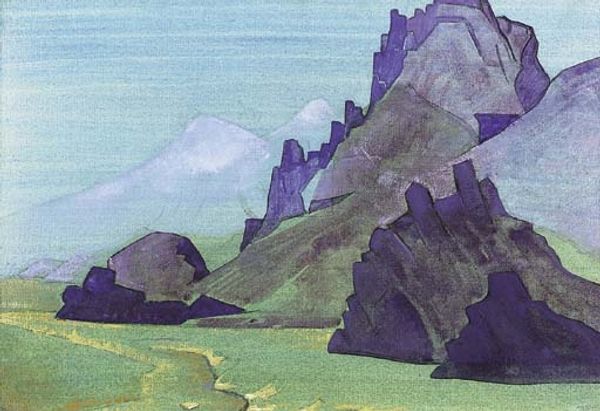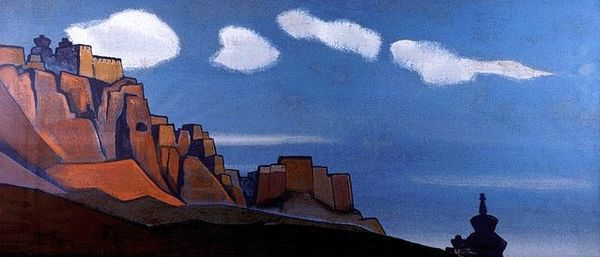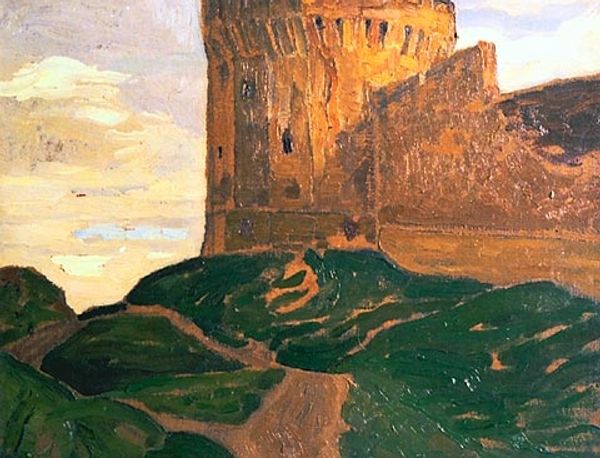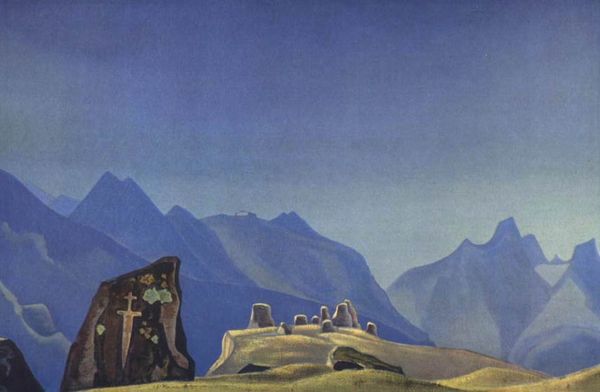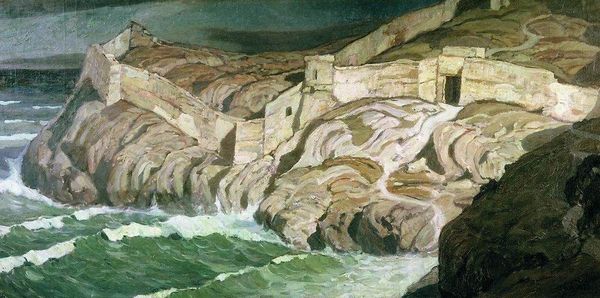
tempera, oil-paint
#
tempera
#
oil-paint
#
landscape
#
oil painting
#
mountain
#
orientalism
#
cityscape
Copyright: Public domain
Curator: What strikes me most immediately is the silence of this scene. It's an overwhelming stillness, a sort of suspended animation hanging in the air. The jagged mountain leading up to the fortress city is like an extension of that silence, and there's no real human presence. What do you see, Editor? Editor: You’ve articulated it perfectly. Looking at Nicholas Roerich's "Sanctuaries and Citadels," believed to be completed around 1925 and currently housed at the Nicholas Roerich Museum, I feel it invites consideration as a stage setting. This tempera and oil-on-canvas work beckons a viewer to consider power and majesty. I mean look at those architectural forms – stark geometry placed atop softly rendered terrain; how can we interpret this visual interplay? Curator: Right, a stage—for whom, or for what? Is this meant to convey an idyllic place or to suggest the strength and power represented in these isolated communities. I can imagine how its construction might represent a challenge of the physical world to be something more in the abstract consciousness of the community that would reside there. I'm thinking about how early 20th-century modernists were wrestling with ideas of utopia and, equally, the potential pitfalls of grand social schemes. How can this painting serve to capture both? Editor: It’s the artist's interest in theosophy, this quest for deeper spiritual meaning and knowledge of the truth, perhaps reflecting a deeper purpose beyond the visual or representational. If you read closely on orientalism—with an artist finding inspiration and spirituality from afar— it's hard to separate this cultural interest and fascination with those from Tibet. Can we not help to look upon those with some caution? Curator: Absolutely; looking closely, one finds orientalism has the potential to exoticize those depicted within them. In its essence, what's key here is that even with the best of intentions, a European interpretation, if unchecked by deeper self-criticism, it fails to take into consideration the nuance or real lived context it's portraying, Editor: The mountain might symbolize personal spiritual aspiration – while that almost lunar quality the colors give off might convey emotional coolness from within. The citadel could represent any structure that we would create as shelter—intellectual, spiritual, societal, or physical – and maybe ask ourselves which sanctuary are we looking to for hope? Curator: The landscape’s capacity to evoke human reflection and emotional solace and, in contrast, the sturdiness of human design juxtapose powerfully. These mountains become like both challenges and guardians to a safe city in such a painting, even though they were painted across cultures so removed and unique. Editor: I suppose the journey through painting lies in how that emotional, historical understanding merges to forge deeper, shared insight—Roerich or no.
Comments
No comments
Be the first to comment and join the conversation on the ultimate creative platform.
